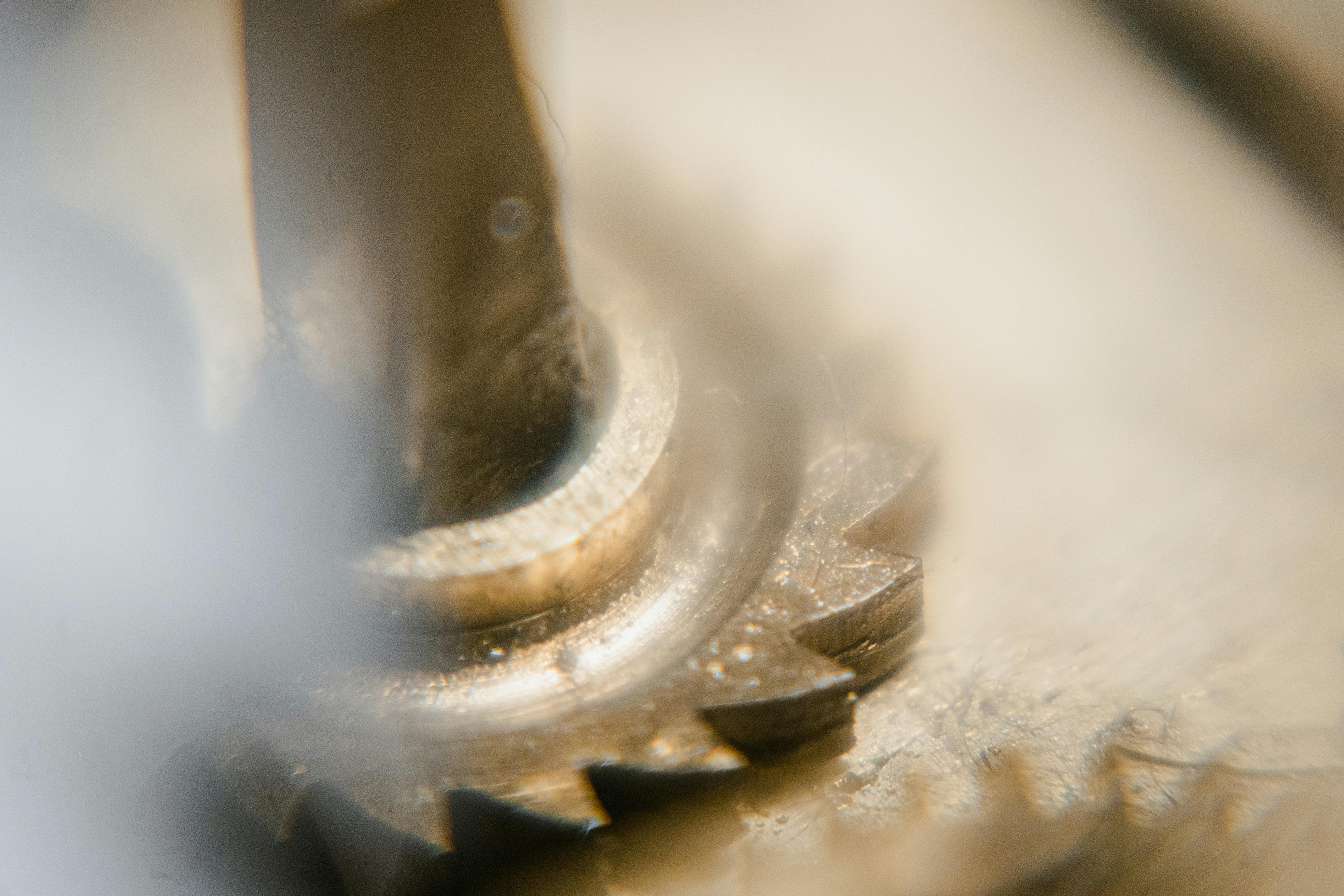Water damage can be a major issue when it comes to wood veneer. Veneer is an extremely thin layer of wood that is applied to the surface of furniture, cabinetry, and floors to give a more elegant feel. Unfortunately, water damage can easily ruin the appearance of the wood veneer, making it look unsightly and aged. Fortunately, there are a few simple steps you can take to repair water damaged wood veneer. With the right materials and techniques, you can restore your furniture or flooring back to its original condition. In this article, we will discuss how you can repair water damaged wood veneer.Wood veneer is a thin sheet of wood that is typically sliced from a log with a slicing machine. It is used for decorative purposes in furniture, cabinetry, wall paneling and other woodworking projects. Wood veneer is usually made from hardwood, but can also be made from softer woods like pine. Because wood veneer is so thin it is susceptible to water damage. If the veneer gets exposed to moisture, it can swell and warp or even rot due to fungus growth. In order to protect wood veneer it should be sealed with a lacquer or shellac finish to prevent water damage.
Assessing Water Damage in Wood Veneer
Water damage can occur on wood veneer surfaces due to a range of factors, such as exposure to high humidity levels or flooding. It is important to assess the extent of water damage in wood veneer as soon as possible in order to take the appropriate measures to prevent further damage. The following steps will help you determine the extent of the damage and what steps need to be taken to repair it.
Check for Discoloration
The first step in assessing water damage in wood veneer is to check for discoloration. Discoloration can indicate that water has been absorbed into the veneer, which can lead to warping and other structural issues. Look for any patches or areas of the veneer that have darkened or lightened from its original color.
Look for Warping
Warping is another sign that water has damaged wood veneer. Warping can occur when water seeps into the wood fibers and causes them to expand and contract. To check for warping, run your hands over the surface of the wood and look for any raised or sunken areas that are not uniform with the rest of the surface.
Check for Soft Spots
Another indication of water damage is soft spots on the surface of the wood veneer. Soft spots are caused by water seeping into the fibers and weakening them, making them more prone to breaking or cracking when pressure is applied. To check for soft spots, press gently on areas of the veneer with your fingers and look for any areas that feel spongy or give way easily.
Inspect for Cracks
Finally, inspect the surface of your wood veneer for any cracks or splits that may have occurred due to excessive exposure to moisture or flooding. Cracks can be difficult to repair and may require professional intervention if they are severe enough. If you find any cracks, make sure they are documented so you can assess their severity later on if necessary.
By following these steps, you will be able to accurately assess how much damage has been done by water on your wood veneer surface and take appropriate measures to repair it if necessary. Remember: it’s always best to address issues like this as soon as possible before they become worse!
Cleaning Up Water-Damaged Wood Veneer
Water damage on wood veneer can be a serious problem, but it doesn’t have to ruin your furniture. With the right methods and materials, it is possible to restore the damaged veneer to its former glory. Here are some tips for cleaning up water-damaged wood veneer:
First, remove any excess water from the surface of the veneer. You can do this with a damp cloth or towel. Be careful not to rub too hard, as this could cause further damage.
Next, use a vacuum cleaner with a soft brush attachment to gently draw out any remaining moisture from the surface of the veneer. This will help prevent further damage and staining.
Once all of the excess water is removed, you will want to use a mild detergent or cleaner specifically designed for wood surfaces. You can also try using white vinegar or rubbing alcohol if you don’t have any special cleaner on hand. Gently clean the surface of the wood in circular motions and wipe off with a clean cloth afterwards.
Finally, apply a thin coat of furniture wax or polish over the surface of the wood veneer to help protect it from future damage. This will also give your furniture an attractive shine that will last for many years to come.
By following these simple steps, you can easily restore water-damaged wood veneer and make your furniture look as good as new again. With regular maintenance and care, you should be able to keep your furniture looking great for years to come!
How to Repair Minor Damage on Wood Veneer
Wood veneer can be a beautiful addition to furniture, walls, and other surfaces in your home. However, over time, minor damage can occur as a result of wear-and-tear. Fortunately, repairing minor damage to wood veneer is not difficult and doesn’t require a lot of time or money. With the right tools and materials, you can easily restore your wood veneer back to its original condition.
The first step to repairing minor damage on wood veneer is to assess the extent of the damage. If there are any cracks or chips in the wood veneer, you will need to fill them with a wood filler before proceeding with any other repairs. Once the filler has dried completely, you will want to sand it down until it is level with the rest of the surface.
Next, you will need to apply some protective finish onto the area in order to protect it from further damage. If the area is small enough, you may be able to use a furniture wax or polish as your protective finish; however, for larger areas, you may want to consider using a polyurethane sealant or varnish for added protection.
Finally, if there are any scratches or discoloration on the wood veneer that cannot be removed by sanding or polishing alone, you may need to use a touch-up marker or paint pen in order to blend them into the surrounding surface. Use caution when applying any type of marker or paint pen and make sure that it matches the color of your wood veneer before proceeding.
With these simple steps, you can easily repair any minor damage on wood veneer in no time at all! Keep in mind that more extensive damage may require professional repair services; however, for minor issues such as scratches and chips, these tips should help get your wood veneer looking like new again.
Step 1: Prepare the Area
Prepare the area where the water-damaged veneer is located. Remove any furniture and items that may be in the way. If possible, move the damaged veneer away from direct sunlight or any other heat sources. Cover the area with a drop cloth or plastic sheet to help contain any debris from the removal process.
Step 2: Assess Damage
Once you have prepared the area, assess the damage that has been caused by water to determine what type of repair is needed. Check to see if there are any cracks, warping, or buckling of the veneer. Also check for any areas where mold or mildew may have begun to form.
Step 3: Remove Damaged Veneer
Once you have assessed the damage and determined what type of repair is needed, it is time to begin removing the water-damaged veneer. Start by gently prying away at corners and edges of your damaged veneer with a putty knife. Be sure not to use too much force as this can cause further damage to your furniture.
Step 4: Sand Surface
Once all of your damaged veneer has been removed, use an electric sander to sand down any rough areas left behind on your furniture’s surface. This will help prepare it for refinishing or re-veneering.
Step 5: Clean Surface
Clean off all dust and debris that was created during sanding with a damp cloth, followed by a dry cloth. Make sure all surfaces are completely dry before proceeding with refinishing or re-veneering.
Step 6: Refinish or Re-Veneer
Once your furniture’s surface has been completely cleaned and dried, you can begin refinishing it with new stain and sealant (for wood) or applying new veneer (for composite). Follow all instructions carefully when applying new finish/veneer for best results.

Step 1: Prepare the Surface
Preparing the surface of your furniture before reattaching the veneer is essential. Start by cleaning the surface with a damp cloth to remove any dust or debris. Allow it to dry completely before continuing. If there is any glue residue on the surface, use a scraper or paint remover to remove it. Once the surface is clean and dry, you are ready to proceed.
Step 2: Reattach the Veneer
Once the surface is ready, you can begin reattaching the veneer. Start by applying an even layer of wood glue on both sides of the veneer and on the furniture’s surface. Make sure that all edges and corners are well covered with glue. Then gently press down on the veneer, using your fingers or a cloth, until it sticks firmly to the furniture’s surface.
Step 3: Secure with Clamps
Once you have reattached the veneer with glue, secure it further by using clamps around all edges of the veneer. This will ensure that it stays firmly in place while drying. Allow it to dry completely before removing the clamps and proceeding further.
Step 4: Sand and Finish
Once your veneer has been reattached and dried completely, you can begin sanding and finishing it in order to give your furniture an even look. Start by lightly sanding away any rough edges using fine-grit sandpaper, then apply a finish to match your furniture’s existing finish. Allow it to dry completely before using your furniture again.
Following these steps will help you easily reattach loose veneer on your furniture so that you can enjoy its beauty for years to come!
Replacing Missing Pieces of Wood Veneer
Veneer is a thin layer of wood that is often used to cover surfaces. It’s an attractive option for many furniture pieces, but it can be easily damaged and pieces may need to be replaced. Replacing missing pieces of wood veneer can be a challenging process, but with the right knowledge and supplies, it can be done successfully.
The first step in replacing wood veneer is to identify the type of veneer you are dealing with. This will determine the supplies you will need and the steps involved in making the repair. If you have access to a large piece of the same type of veneer, you can use this as a template for your repair piece.
The next step is to prepare your work surface and gather all necessary supplies. You will need an adhesive that is suitable for wood veneer, such as contact cement or hide glue, along with a roller or brush for application. You may also need a heat gun or other tools depending on the type of repair you are making.
Once your supplies are gathered and your work surface prepared, you can begin cutting out the replacement piece of wood veneer using your template as a guide. Make sure that it is cut precisely so that it fits snugly in place once applied. You may want to use sandpaper or a file to smooth any rough edges before applying adhesive and placing the replacement piece in place.
Once the replacement piece is firmly in place, you will want to seal it using a clear finish such as polyurethane or lacquer so that it looks like new again. Allow plenty of time between coats for drying before applying additional layers if needed. With patience and care, replacing missing pieces of wood veneer can restore furniture back to its original beauty!
Repair Major Damage on Wood Veneer
Wood veneer is a thin layer of wood that is applied over a cheaper, inferior material like particle board or plywood. It is an attractive, cost-effective solution for many home improvement projects. Unfortunately, it can be prone to damage due to normal wear and tear or accidental spills and scratches. If you find yourself needing to repair major damage on wood veneer, there are several steps you can take to get the job done correctly.
The first step in repairing major damage on wood veneer is to identify the extent of the damage. Carefully examine the area for any signs of splitting or cracking. If the damage is minor and localized, you may be able to repair it with a simple putty knife and some wood glue. However, if the damage is more extensive, you may need to replace the entire piece of veneer.
Once you have identified the extent of the damage, it’s time to start making repairs. If you are replacing an entire piece of veneer, make sure that you purchase one that matches the other pieces as closely as possible in terms of color and grain pattern. Carefully remove any nails or screws that are holding down the damaged piece before attempting to remove it from its frame. You may need a chisel or utility knife for this step.
If your repairs involve filling cracks or holes in existing veneer, start by cleaning out any loose debris from within them with a stiff brush or vacuum cleaner before applying a specialized wood filler designed specifically for use on veneers. Allow it to dry completely before sanding it down with fine-grit sandpaper until it is flush with the rest of the surface area.
Once all your repairs are complete, use a damp cloth to wipe away any dust and debris from your work area before applying stain or sealant as desired for extra protection against future wear and tear. With these simple steps in mind, you should be well on your way towards successfully repairing major damage on wood veneer!

Conclusion
Repairing water damaged wood veneer can be a complicated process. Depending on how much damage has occurred, it may require you to replace the entire piece of furniture or just the veneer. If the damage is limited to the veneer, you can typically repair it yourself with a few simple tools and supplies. Start by removing any wet or swollen areas of the veneer and then sand and prepare the surface for repair. Apply new veneer with contact cement, clamp it in place, and finish by staining or sealing the repaired area. With a little patience and attention to detail, you can have your furniture looking like new again in no time.
It is important to remember that wood veneer is delicate, so take your time when working with it to avoid further damage. If you are unsure about any step of the repair process, it is best to consult an experienced professional who can help you complete the job safely and efficiently.

